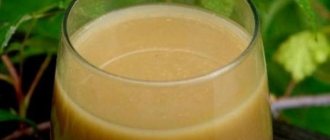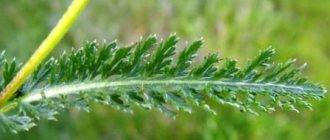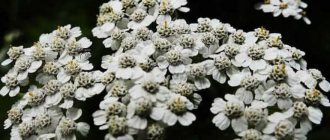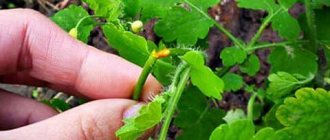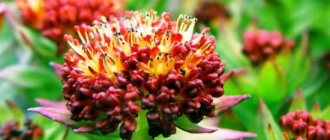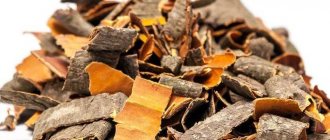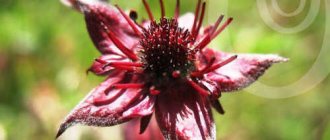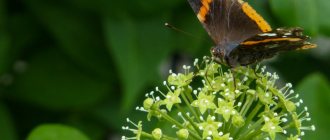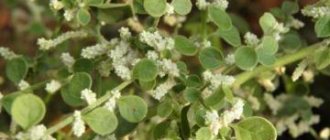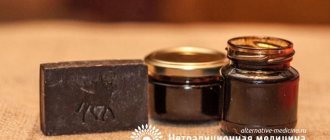Common yarrow is a perennial herbaceous plant of the Asteraceae family. It is found in the European part of Russia, Western and Eastern Siberia, the Far East, the Caucasus, deserts and semi-deserts of Central Asia, as well as in Belarus, Ukraine, Western Europe and North America. Grows on loamy and sandy soils in clearings, forest edges, roadsides, gardens, parks, forest belts and wastelands.
Yarrow herb (Millefolii herba) is used for medicinal purposes.
What is the drug?
Yarrow tincture is a liquid dosage form . Parts of the plant are crushed and filled with an alcohol base of a certain concentration. The product is infused in a dark and warm place and filtered.
Difference from infusion, decoction, extract
The alcohol base makes the tincture and extract similar.
The latter is a concentrated extract from plant materials. Prepare the extract immediately, without keeping it for several days. The difference from infusion and decoction lies in the peculiarities of preparation. To obtain such dosage forms, plant materials are filled with water.
In the case of decoction, heat treatment is used; the preparation process usually takes no more than an hour, not taking into account cooling.
The infusion is prepared cold, hot or mixed. Plant materials are usually filled with water for no more than half an hour, less often for several hours or a day. The tincture is kept many times longer, sometimes for a month.
An important difference between tinctures and decoctions and infusions is the shelf life. The alcohol base extends it to 1-2 years. Decoctions and infusions are stored for no longer than 2-3 days.
Historical facts
In folk medicine, the plant is highly valued and has been used for centuries.
The history of medicinal use of yarrow originates in the myths of Ancient Greece. Ancient chronicles mention a story that the grandson of Dmitry Donskoy, who suffered from severe nosebleeds, was cured with yarrow.
The plant has been known since ancient times. Dioscorides called it Herba vulnenaria, that is, a wound herb that was used for bleeding and to treat wounds. According to Pliny, yarrow got its name in honor of Achilles, who healed Telephus’s unhealed wound with it.
Other sources claim the origin of the name from the Greek achillos - abundant food or from achillon - thousand.
Benefits and harms
The beneficial properties of the product are expressed in the following effects:
- hemostatic;
- anti-inflammatory;
- astringent;
- bactericidal;
- wound healing;
- anesthetic;
- choleretic;
- antiallergic.
Yarrow tincture can also be harmful. Due to the choleretic effect, there is a risk of stone movement and blockage of the duct. This can aggravate cholecystitis.
When taking it, be sure to strictly follow the dosage. Exceeding it is :
- allergic reaction;
- poisoning;
- menstrual irregularities;
- dizziness;
- decreased blood pressure;
- gastrointestinal disorders;
- exacerbation of chronic diseases.
Medicinal properties of yarrow
Yarrow
– an effective hemostatic agent, it is used for internal and external bleeding.
The herb is also good for inflammation of the uterus and diseases of the gastrointestinal tract. Preparations made from it eliminate metabolic disorders. Yarrow flower baskets and leaves are rich in vitamins K, C, tannins, essential oils, phytoncides and carotene. Thanks to the combination of such biologically active substances, the plant is used in the treatment of:
- catarrh and stomach ulcers
- malaria
- pulmonary tuberculosis
- kidney stone disease
- women's diseases
- colds
- hemorrhoids
- diarrhea
- liver diseases
- anemia
- headaches
- nervous diseases
- hypertension.
The juice of the plant is prescribed for the treatment of anemia; it prevents the occurrence of kidney and liver stones and has many other useful medical applications. There is an opinion that yarrow preparations should not be used if you are prone to thrombosis. However, most herbalists believe that the plant can be used in any blood-related situation. It acts very gently, and even with prolonged use, blood clots do not form.
In addition, yarrow helps well with diseases of the nervous system - hysteria, hypochondria, headaches, and the most powerful effect is with headaches accompanied by nosebleeds. Yarrow is also used for diseases of blood vessels and the heart, since the plant has the ability to expand them, especially the blood vessels of the heart. One of the important properties of yarrow is its ability to affect the venous wall. This is why this herb is good for varicose veins.
The plant is used for gastric ulcers, even in cases where the stomach wall is covered with erosion and bleeding occurs. It is also used for colitis, enterocolitis, and dysentery. Yarrow is good at expelling worms, it is effective against enuresis and diseases of the female genitourinary system. It is especially good to take it during painful menstruation, accompanied by heavy bleeding. In addition, preparations from the plant are used to renew lactation.
Selection of raw materials
To prepare the medicine, use yarrow grass or flowers. Fresh and dried raw materials are suitable. The latter can be bought or prepared yourself.
Yarrow is harvested during active flowering . During this period, a maximum of essential oil and valuable elements accumulate. Harvest grass on dry and sunny days. It is better to work in the morning, but after the dew has dried.
The raw materials are cut with a sharp knife. Shoots up to 10-15 cm are harvested, with at least 2-3 leaves. Flower baskets are cut so that the stem is no more than 4 cm.
Plant materials are collected in environmentally friendly places. It is important to be away from industrial enterprises, roads, and landfills.
Preparation
Yarrow can be used fresh. It is not recommended to wash the collected raw materials, especially flowers that contain beneficial pollen.
Dried yarrow is also suitable for preparing medicine.
They prepare it in different ways:
- natural drying - under a canopy, in the attic, in the open air, but only in the shade;
- workpiece in a dryer or oven - temperature up to 40-50°C.
The plants are dried in a thin layer and then stored in paper bags, linen bags or glass jars. High humidity and proximity to substances and products with a strong odor are unacceptable.
The raw materials must be dried evenly and completely . The stems should break easily, the flowers and leaves should crumble.
To prepare a healing remedy, yarrow must be crushed. Fresh raw materials are finely chopped, and dry ones are simply crumbled by hand.
Chemical composition
The herb of the plant contains essential oil (from 0.25–0.8% to 1.4%). Its amount varies depending on the growing season: during the flowering of yarrow, the content of essential oil increases.
The essential oil contains monoterpenoids (tujol, pinene, camphor, cineole, borneol) and sesquiterpenoids (acetylbalquinolide, proazulene, achillenum, caryophyllene).
The following substances are also found in yarrow herb: flavonoids, alkaloids, tannins, esters, stachydrine, choline, acetic, isovaleric and formic acids, ascorbic acid, vitamins A and K.
Choice of alcohol base
Yarrow tincture is prepared with alcohol, vodka, and moonshine. It is important to choose a high-quality base; the action and safety of the product depends on it.
Moonshine
Moonshine is close in strength to vodka, so often it does not even need to be diluted to prepare medicine. Only use purified product. Moonshine should be transparent, without sediment or strong odor. In its preparation, the quality of raw materials, equipment, and adherence to the recipe are important.
Vodka
More often, vodka is used to prepare healing compositions - an affordable product. You need to take good raw materials. This is evidenced by the following signs of quality :
- transparency;
- absence of sediment, impurities;
- soft taste;
- stamp with the date of bottling;
- a spiral of small bubbles when shaken;
- when ignited, a weak blue flame;
- tight cap;
- maintaining transparency when adding sulfuric acid (1:1).
Alcohol
To prepare medicinal formulations, it is better to use medical alcohol, since the requirements for it are increased. The concentration varies, reaching 95%. Dilute with water in a ratio of 2:3 to the required level.
Medical alcohol is not available to everyone, so it is usually used as a food product. The degree of purification is important . It is highest for drinking ethyl alcohol. A rectified product is also suitable.
Industrial alcohol is not suitable for preparing medicinal tinctures. Wood, cellulose or oil are used to make it. This is dangerous to health, fraught with poisoning and death.
Appearance
Photo: Pixabay
Yarrow is difficult to confuse with other plants. This is a Eurasian species that has been introduced to other continents. It is found almost throughout the entire territory of Russia, with the exception of the northernmost regions.
The plant is a perennial and can reach a height of 20 to 80 centimeters. It has a long, cord-like creeping rhizome.
The leaves are pinnate, pubescent with a large number of small thin cilia, which give the plant its name. The stem at the top bears an inflorescence - a shield with small flower baskets. Each basket consists of 5-7 marginal flowers with white or pink tongues and several central tubular ones.
This inconspicuous plant is considered a good honey plant. It blooms for a long time, flowering begins in June and ends in late autumn in September - October.
Recipe
Preparation of yarrow tincture involves long-term exposure of raw materials in a dark and warm place . The optimal temperature is 20-24°C.
For preparation, it is best to take glassware - a jar or bottle. Take the lid (cork) from the same material, nylon or plastic. It is better to use dishes made of dark glass. For storage, you can choose a smaller container - after filtering, the volume will decrease.
On vodka
To prepare yarrow tincture with vodka you need :
- 30 g of dry vegetable raw materials;
- 0.1 l of vodka.
Dry yarrow is crushed, poured into a suitable container and filled with vodka.
You need to infuse the product for 2 weeks, shaking daily. The finished composition is filtered.
On moonshine
Yarrow tincture on moonshine is prepared according to the same recipe as the vodka solution. If the alcohol base is too strong, it is diluted.
It is convenient to use the Fertman table for calculations . So, to obtain a base of 40%, add 38.4 ml of water to 0.1 liter of moonshine with a strength of 55%, 60% - 51.4 ml.
Alcohol form
A recipe with vodka is suitable for cooking with alcohol. You can immediately dilute the base to 40% strength using Fertman's table. According to it, to 0.1 liter of 95% alcohol add 144.3 liters of water, 75% - 90.6 ml.
There is another option - to use pure alcohol for preparation. Then the finished product is diluted after filtering, taking into account the final volume. In this case, the plant material is infused for less than 10 days.
Yarrow for hair
Fragility, graying of hair, dryness, keratinization and flaking of the scalp indicate that the body is sorely lacking vitamin A. The use of yarrow has an excellent effect on dry skin and hair. The plant extract strengthens hair well and gives it shine.
Recipe for improving hair growth. It is recommended to pour 10 g of finely chopped dried flowers of the plant into 250 ml of boiling water. You need to infuse the product for 1 hour so that the infusion does not cool completely; a thermos is best. Then the composition must be filtered and 2 tablespoons poured. The infusion should be rubbed into the roots of the hair, and the rest should be moistened with the hair an hour before washing your hair, then wash your hair with shampoo. The remaining broth should be added to water for rinsing hair: 2 tablespoons per 1 liter of water.
How can it be applied?
Yarrow tincture is taken internally and used externally. Features of application depend on its purpose .
As an anti-inflammatory, analgesic or hemostatic agent, 30 drops per dose are sufficient. They are added to a quarter glass of water. Take the drug 3 times a day. It's better to do this before eating.
The medicine is used externally without diluting. It is used for rubbing. If you are worried about cramps, then it is useful to use a tandem of yarrow and thyme.
Prepare the product like this:
- Grind 10 g of yarrow and 5 g of thyme, pour into a suitable container.
- Add 0.1 l of vodka.
- Leave for 10 days, shake regularly.
- Filter.
This rubbing composition can be used for several weeks. Feet are kept warm after treatment.
For hypertension, yarrow is poured with vodka 1:10. After 10 days, the product is filtered. Take it 1 tsp, diluting 1/3 glass of water 2 times a day on an empty stomach. The product helps even with impotence and prostate adenoma, but you need to drink 2 ml three times a day. The composition is diluted in ¼ glass of water.
Growing yarrow
The plant is not whimsical; it grows calmly in both sun and partial shade. Yarrow propagates vegetatively and by seeds. The seeds of the plant are sown in spring or autumn; the seeds are sown in beds or in a flower bed. In April, you can sow seeds for seedlings in pots. The plant's seedlings are very small, so they can easily be confused with a simple weed. The grass is propagated by dividing the rhizomes in the spring, and in the summer the plant can be propagated by green cuttings. Yarrow grows in one place for 5 years. When 5 years have passed, the plant needs to be transplanted to another place. To do this, the grass is dug up along with the roots, the weeds are removed, the bushes are divided and planted separately. When autumn comes, the bush must be cut off, leaving shoots that are at least 12 cm long.
Fertilizers must be added to the soil three times a month. Fertilizers are applied the first time before the plant blooms, the second time during the flowering period, and the last time after the plant blooms.
Advantages and disadvantages
Yarrow has long been known for its healing properties and is even officially recognized as a medicinal raw material in Russia and other countries. The advantages of the tincture from this plant are:
- no heat treatment, which preserves more benefits;
- long-term storage;
- better dissolution of chemical elements;
- fast absorption;
- antiseptic effect;
- convenient form of administration - the dosage is minimal, several times less compared to some dosage forms;
- compactness of the medicine - you can take the bottle with you, it takes up little space;
- possibility of self-cooking, adding other ingredients.
Minuses:
- presence of alcohol in the composition;
- the product must be infused for several days or weeks;
- there are contraindications;
- side effects;
- risk of poisoning in case of overdose.
Dosage forms
Pharmacies sell preparations from the plant in the form of concentrates, alcohol extracts, and aqueous solutions. All parts of the plant (flowers, leaves, stems) have properties beneficial to the body.
Yarrow is found in preparations to boost immunity:
- With sage, bile flows out and liver function improves.
- For neuroses and sleep disorders, it goes well with lemon balm and valerian.
- With the herb St. John's wort it helps against obesity.
- For the treatment of various ailments, infusions with chamomile, immortelle, and calendula help.
Contraindications
Yarrow tincture is not suitable for everyone. Contraindications to its use are as follows :
individual intolerance;- children under 6 years of age;
- pregnancy;
- breast-feeding;
- increased blood clotting;
- tendency to thrombosis;
- gastritis with high acidity;
- gastrointestinal ulcer.
Useful properties of yarrow
Yarrow has antibacterial and anti-inflammatory properties. The plant has a positive effect on human internal organs, and it also promotes the formation of mucus and relieves gases in the intestines. Yarrow acts on the smooth muscles of the intestines. The plant has an antispasmodic effect on the biliary and urinary tract. Due to the content of tannins, chamazulene and essential oil in the herb, it is used as a wound-healing, bactericidal and anti-allergic agent.
An infusion of the plant is used to increase blood clotting and reduce the risk of blood clots. Yarrow also helps with burns. In addition, the plant can reduce the heart rate.

